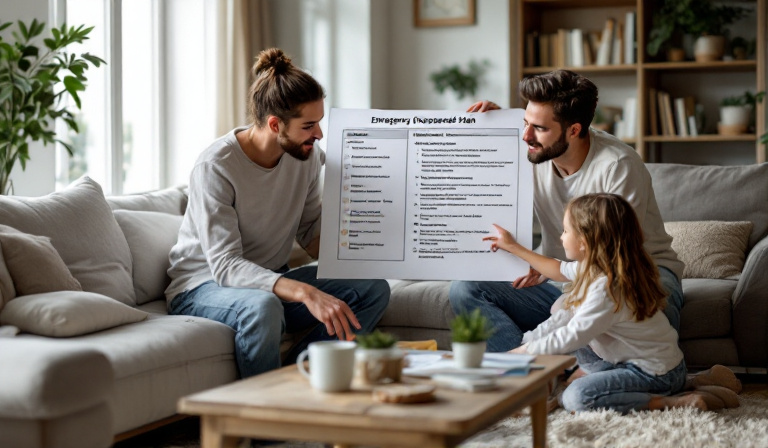
Ensuring the safety of your home and loved ones is a top priority for any family. While we often focus on securing our homes with alarms and locks, planning and conducting effective safety drills can be equally crucial. These drills prepare everyone to respond swiftly and efficiently in case of an emergency, minimizing potential harm and confusion. Below, we provide a comprehensive guide on how to plan effective safety drills for your home.
Understanding the Importance of Safety Drills
Before diving into the specifics of planning, it's essential to understand why safety drills are vital. Emergencies such as fires, earthquakes, or gas leaks can occur unexpectedly. In these situations, having a rehearsed plan can help prevent panic and ensure everyone knows exactly what to do.
Identify Potential Hazards
The first step in planning safety drills is identifying potential hazards specific to your home and area. Consider natural disasters common in your region, such as hurricanes, tornadoes, or earthquakes. Also, evaluate household-specific risks like fire hazards, gas leaks, or electrical issues.
- Fire Hazards: Check for overloaded electrical outlets, unattended candles, and kitchen mishaps.
- Natural Disasters: Identify if your home is in a flood zone or prone to earthquakes.
- Health Emergencies: Consider family members with specific health conditions that might need special attention.
Develop a Comprehensive Plan
Once you have identified potential hazards, develop a comprehensive plan that addresses each one. Your plan should include:
- Escape Routes: Map out multiple escape routes for each room in your house. Ensure these routes are accessible and free of obstructions.
- Meeting Points: Designate a safe meeting point outside your home where everyone can gather after evacuating.
- Roles and Responsibilities: Assign specific roles to family members, such as who will assist children or pets, check rooms, or call emergency services.
- Emergency Contacts: Keep a list of emergency contacts readily available, including family members, neighbors, and local emergency services.
Conduct Regular Drills
Practice makes perfect, and regular drills are the best way to ensure everyone knows the plan. Here’s how to conduct drills effectively:
- Schedule Drills: Conduct drills at least twice a year. Vary the scenarios to cover different emergencies.
- Simulate Realistic Scenarios: Make the drills as realistic as possible. For example, practice a fire drill with alarms sounding, or simulate a power outage during an evening drill.
- Include Everyone: Ensure all family members participate, including children, the elderly, and pets. Everyone should know their roles and responsibilities.
- Review and Improve: After each drill, discuss what went well and what needs improvement. Make necessary adjustments to your plan based on feedback.
Educate and Empower Family Members
Education is a critical component of effective safety drills. Empower your family members by providing them with the knowledge and skills they need to respond to emergencies confidently.
- First Aid Training: Encourage family members to take first aid and CPR courses. Having someone trained in basic medical response can be invaluable during emergencies.
- Emergency Supply Kits: Assemble emergency kits that include essentials like water, non-perishable food, first aid supplies, flashlights, and batteries. Ensure everyone knows where these kits are located.
- Communication Plans: Teach family members how to use emergency communication tools, such as walkie-talkies or emergency apps, in case of phone service disruption.
Special Considerations for Unique Needs
Every household is unique, and your safety drills should account for any special needs or considerations. Here are some tips:
- Children: Use simple language and conduct age-appropriate drills to ensure children understand what to do without feeling scared.
- Elderly or Disabled Family Members: Plan for additional assistance and ensure accessibility during evacuations.
- Pets: Include pets in drills and plan how to evacuate them safely. Keep pet carriers and leashes readily available.
Leverage Technology
Modern technology can enhance the effectiveness of your safety drills. Consider utilizing the following:
- Smart Home Devices: Set up smart alarms and sensors that can alert you to smoke, carbon monoxide, or gas leaks.
- Emergency Apps: Download apps that provide alerts for weather or local emergencies. Ensure all family members know how to use them.
- Digital Checklists: Use digital tools to create and share checklists or plans with family members. This ensures everyone is on the same page.
Conclusion
Planning effective safety drills for your home is an investment in your family's safety and peace of mind. By identifying potential hazards, developing a detailed plan, conducting regular drills, and educating your family, you can ensure that everyone is prepared for any emergency. Remember, the key is to stay calm, stay informed, and stay safe. With these steps, you'll be well on your way to creating a safer home environment for everyone.

